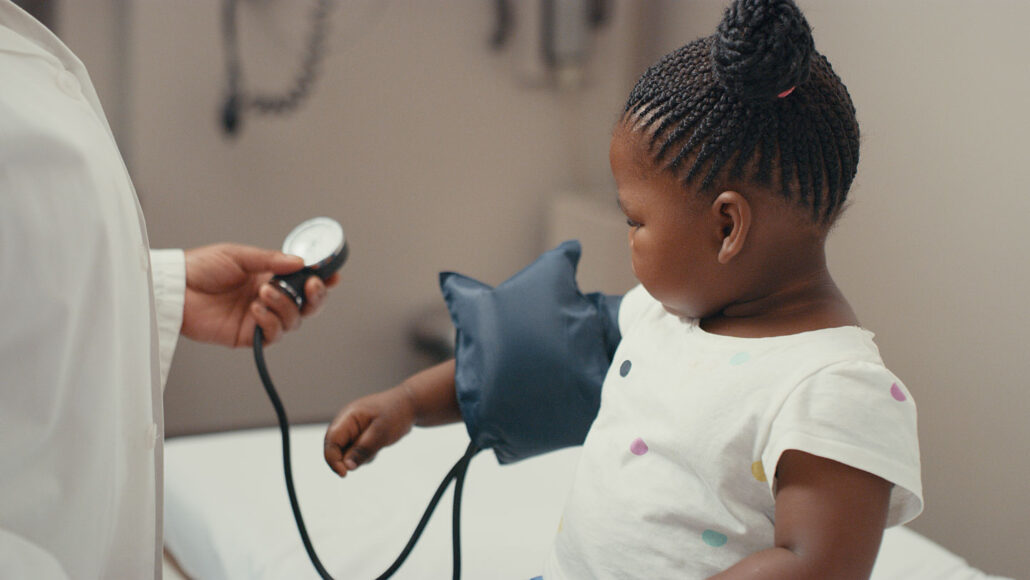Explainer: High blood pressure stresses the heart and blood vessels
Because it can develop at any age, doctors should screen for it in everyone — even kids

High blood pressure is a problem commonly found in adults. But it can develop at any age — even in babies. And because it can be dangerous, doctors should routinely measure blood pressure, even in little kids.
Marco VDM/E+/Getty Images Plus
By Erin Ross
You may have heard that your parents or grandparents are taking pills to control their high blood pressure. It’s a condition common in adults over age 40. But it can affect people at any age. And it’s dangerous at any age — even in babies.
Your heart pumps blood throughout the body. Blood carries oxygen, energy (in the form of the sugar glucose) and chemical signals to all your cells. The speed at which it flows can vary from moment to moment. The heart is like a faucet that turns on and off each time your heart beats, pumping out blood in pulses. But because our arteries are stretchy, the blood is always moving, even between beats.
Blood pressure is a gauge of how hard the heart works to move that blood. Doctors measure two numbers to gauge it. The higher number is systolic (Sis-TAWL-ik) pressure. It measures how hard blood pushes on artery walls when the heart beats. This is when that so-called faucet is “on.” The lower, diastolic (Dye-uh-STAWL-ik) pressure measures how hard blood pushes on those arteries between beats — or when the faucet is “off.”
The numbers are usually reported as a ratio. If either number is too high, someone’s blood pressure might be labeled as high. The medical term for this is hypertension.
How high is too high? For adolescents and otherwise healthy adults, doctors generally look for numbers at or below 120/80 millimeters of mercury. That unit denotes how high mercury would rise in an old-fashioned device known as a sphygmomanometer (SFIG-moh-ma-NOM-eh-tur). But what qualifies as a healthy ratio varies by age. In year-old toddlers, for instance, a healthy ratio would be closer to 105/58.
When blood pressure gets too high, it can stress stretchy arteries. This can make them stiff and force the heart to work harder to move blood through them. Because the heart is a muscle, working too hard against blood pressure can cause it to grow or enlarge.
That might not seem like a bad thing, but it can be. A heart with thicker walls needs more blood to fuel it. The veins that bring blood to your heart don’t grow along with that heart thickening, explains Elaine Urbina. She’s a pediatric cardiologist in Ohio at Cincinnati Children’s Hospital Medical Center. Urbina studies how to prevent heart problems in children.
Studies have linked an increase in the size of certain parts of the heart “with heart attack and stroke in adulthood,” she notes. The good news: Treating high blood pressure can cause thickened walls to return to their normal size.
Some other problems linked to high blood pressure, however, can’t be reversed. For instance, high blood pressure can cause permanent damage to the heart, kidneys and brain. There’s some evidence that high blood pressure also can impair thinking. That could worsen your performance in school.
Urbina led a research team that published a 2022 study of adults who had been diagnosed with very high blood pressure as children. “We showed that elevated [childhood] blood pressure is directly associated with heart attack and stroke in adults,” she notes.
Some potential long-term health problems can become more likely when blood pressure is elevated — even if it’s not quite “hypertensive,” Urbina says. “So we’re not even clear if our [present] definition of high blood pressure in youth is too lenient,” she says. What is clear: Prevention is the best strategy. That’s helped by a healthy, active lifestyle. And that can be as easy as going for walks outside or playing basketball with your friends.







